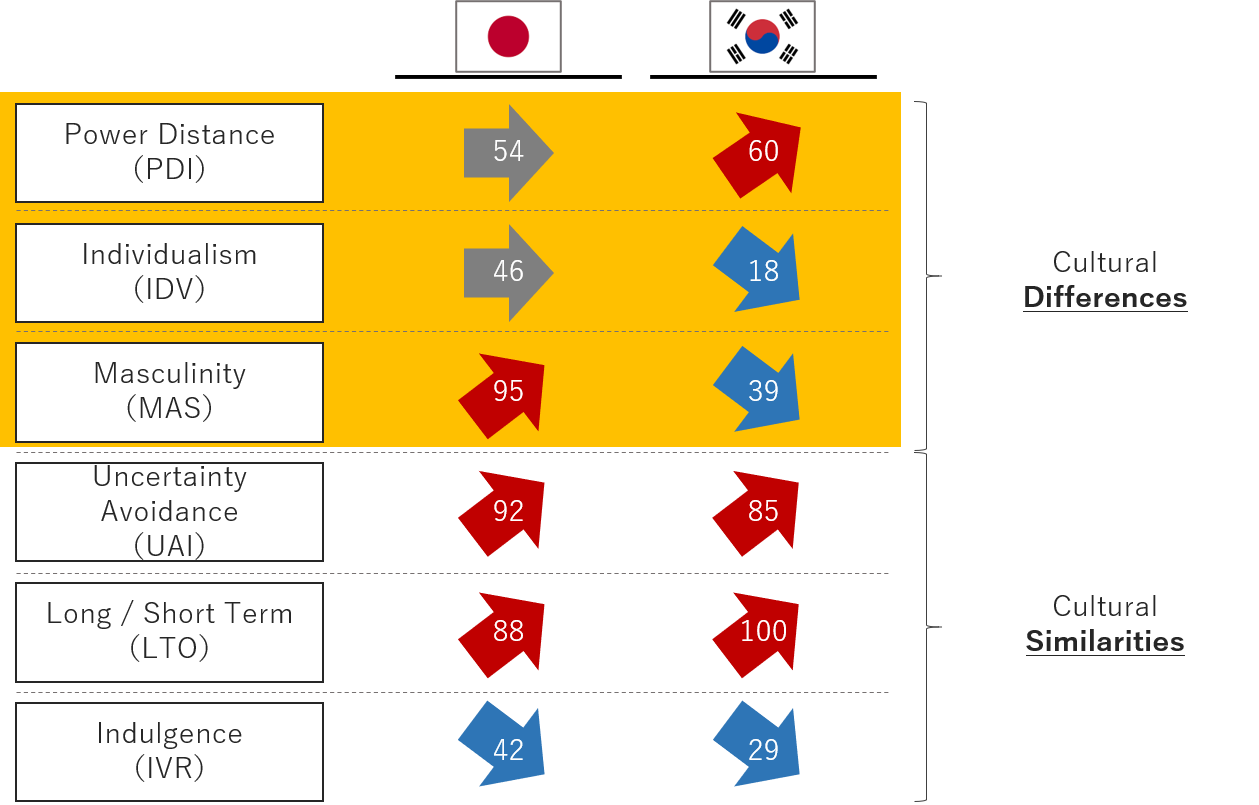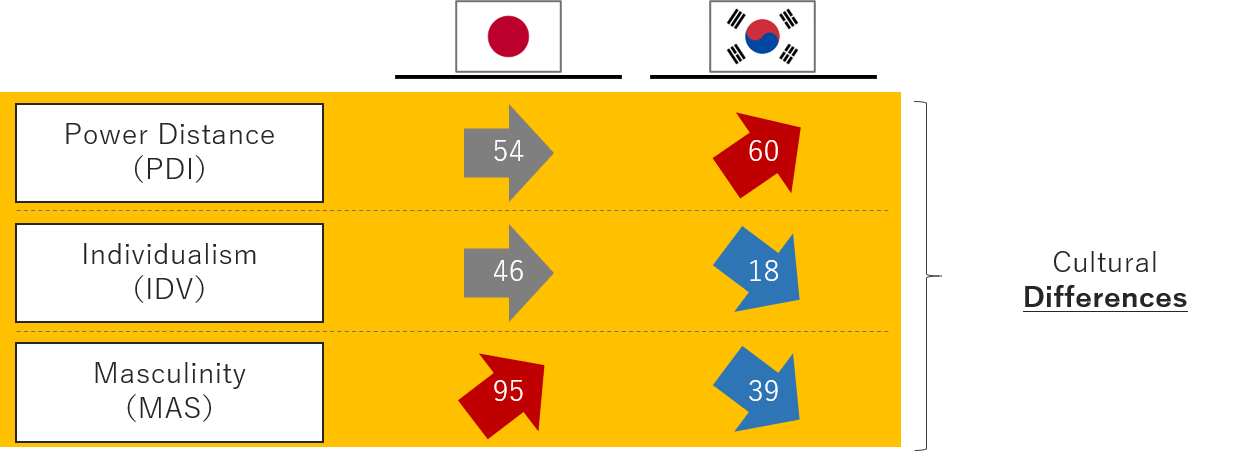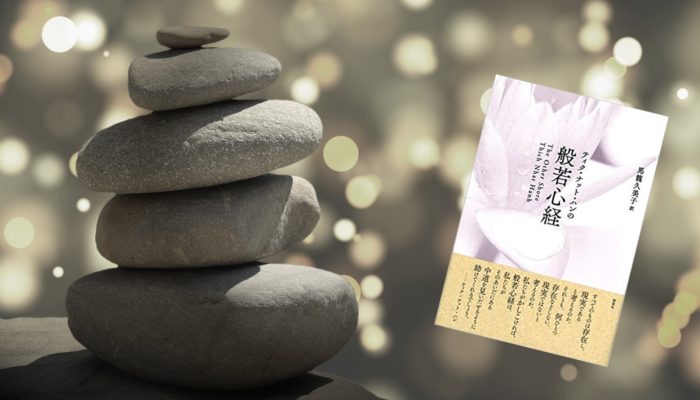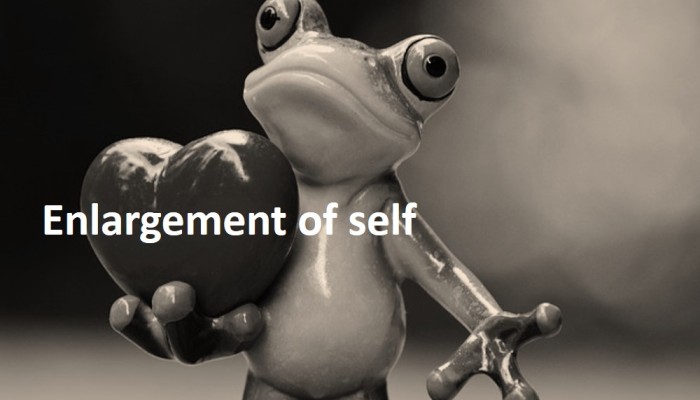Blog

Intercultural understanding through filmInter Cultural ManagementOrganization Culture
2020.5.28
Korean culture and leadership from the drama ‘Itaewon Class’

Yasushi Watanabe | 京都大学博士(人間・環境学)
Popular Korean dramas in Japan
In the recent (May 2020) Netflix ranking, the Top 10 are either Korean dramas or Japanese anime.
I hadn’t watched many Korean dramas before, but I watched Itaewon Class following my friend’s recommendation.
Itaewon Class | Netflix Official Site
In a colorful Seoul neighborhood, an ex-con and his friends fight a mighty foe to make their ambitious dreams for their street bar a reality. Watch trailers & learn more.
I was not expecting much, but I was hooked and watched all 16 episodes in several days. Some of the stories look unrealistic, and I shouted “That’s insane !! It can’t be possible!!” but gradually I’ve been caught up in the story.
Personally, I’ve been a fan of Korean “movies” ever since I saw ”The Host” directed by Bong Joon-ho in 2006, and I watch some movies from time to time. Korean films have their own unique world view, depicting the unreasonableness like “Mother”, “Old Boy”, “Breathless”, and “Silenced”, and others that make us feel the heartbeat like “My Sassy Girl”. Pong Juno’s “Parasite” won last year’s Oscar.
映画『パラサイト 半地下の家族』オフィシャルサイト
第72回カンヌ国際映画祭<最高賞>パルムドール受賞!世界がその才能を絶賛する若き巨匠ポン・ジュノ監督×名優ソン・ガンホ。”ネタバレ厳禁!”100%予測できない展開に全ての感情が揺さぶられる、超一級エンターテインメント作品!
On the other hand, Korean dramas have a strong image from the “Winter Sonata” boom and are viewed by middle-aged women. I had barely seen it before.
Multiple viewpoints to enjoy the story
“Itaewon Class” aired in Korea in January~March 2020, and reportedly grew in ratings with each episode broadcast, with a final rating of 16.5%.
I think it’s a drama that can be viewed in many different ways. It can be seen as a battle between the old and the young, or it can be seen as a battle between large companies and ventures. We can also try talking about the thick blood relationship of the father and son. I think one of the biggest elements of popularity is complex romantic feelings, but there are a lot of different elements behind the story.
Personally, I found this drama to be really interesting. As I enjoyed the story, I felt the Korean culture flowing behind the story.
At the heart of the culture are values. Values are a system of evaluation axes, such as “what do we consider to be good and what do we consider to be bad,” “what do we consider to be beautiful and what do we consider to be dirty. Especially in local popular dramas and movies, such values are often strongly expressed and it is interesting to read and decipher them.
Understanding Korea is the key to understand the values of many emerging countries
.
“Near and far neighbors”
For many Japanese, I think Korea is like that. Japan and Korea are very close geographically and there are many Koreans who live in Japan and come for sightseeing, but in fact we don’t understand each other well. Looking at the time span of about 2000 years, the Korean Peninsula is probably the place where Japan had the most frequent interactions, but for the last 100 years or so, Japanese people have been paying more attention to the country across the Pacific Ocean (the U.S.) than to the other side of the islands, so Japanese may have been less interested in Korea.
However, the times are changing. China’s influence in East Asia is growing extremely large. In addition, considering the development of ASEAN countries and the growth of India, Japan, which is located at the eastern end of Asia, needs to consider how it can create a symbiotic environment with its neighboring countries in this location where it is impossible to move. The days of only having to look at the United States are rapidly coming to an end.
Understanding Korea is one hint to consider Japan’s path of coexistence in Asia. This is because Korea is closer to other Asian countries in terms of culture than Japan.
Huib Wursten divided the world into cultural spheres, based on the research of Dutch social psychologist Dr. Heert Hofstead. According to him, Korean culture belongs to the cultural pattern (mental image) of “pyramid’.
(Source “The 7 Mental Images of National Culture” Huib Wursten)
The “Pyramid” cultural includes Taiwan and Thailand in other Asian countries and regions. When we see other regions, it includes Middle East, Turkey, Africa, Russia and Latin America (excluding Argentina and Costa Rica).
In other words, although there are superficial differences in lifestyle and appearance among these countries and regions, it is effective to live and work with values similar to those of Korea.
What can we learn from the Itaewon class?
So what can we learn through the Itaewon Class in terms of how we should live in this Asian age?
The first thing I think we can learn is about how leaders should be in a “high power distance,” “collectivist,” “high femininity” culture. The image of a leader in a team or organization with this cultural tendency is portrayed very clearly through the protagonist, Park Sae-ro-yi .

(Fig.1 Cultural differences in 6D models between Japan and Korea Source Hofstede Insights Group, Fig developed by author)
The figure above compares the scores of Hofstead’s 6-dimension model between Japan and South Korea. Scores move between 0~100, with 45~55 as the middle zone, we consider higher scores as “high culture” and lower scores as “low culture”.
Comparing the scores of Japan and South Korea, we can see that the three dimensions in the lower half are common and the three dimensions in the upper half are different.
In short, Korean culture and Japanese culture are half the same and half different.
Park Sae-ro-yi’s words and actions in the drama exude a strong sense of Korean culture, which is consistent with the 6D scores.
Hofstead’s model is useful in understanding the relative differences among cultures. We can understand the numerical difference between Japanese and Korean culture in terms of similarities and differences. And to know specifically what that means, What Park Sae-ro-yi says and does is living material to learn cultural differences.
Similarities between Korea and Japan
.
First, the similarities. The lower half of the chart above shows the three dimensions that are common to Japan and South Korea, and I think the commonality of these three is easy for many Japanese to understand.
For example, both Japan and South Korea have low scores in terms of Indulgence (IVR), while at the same time both countries show long-term orientation (LTO) scores. This cultural trend has been portrayed in Park Sae-ro-yi’s life stories from the first episode. He spent long and hard time to open a tavern, Dambam. After being kicked out of high school, he spent several years in prison, then went further aboard a pelagic fishing boat, did factory work, and saved money through hard work.
Struggle and save for the future, which is perceived as a value in this culture. That is portrayed early in the drama as the background of the main characters. When Jo Yi-seo, who is a business partner and has feelings for Park Sae-ro-yi, noticed the wound on Park Sae-ro-yi’s arm and asked, “What’s this wound?, she learned about Park Sae-ro-yi’s past hardships. After this, she decided to “protect him” more deeply. This is one of the key scenes where we can see that the relationship between Park Sae-ro-yi and Jo Yi-seo has deepened. Values are strongly connected with emotions, and it was a scene that depicted the deepening of emotions based on values inside Jo Yi-seo.
Another point that Korean culture is similar to Japanese one is the high level of Uncertainty Avoidance (UAI). This may not be the case with Park Sae-ro-yi’s actions at first glance. However, there is a scene where Park Sae-ro-yi says “It’s better to succeed one store at a time” in contrast to Jo Yi-seo who says, “Let’s get a fund investment and move forward with franchising all at once”.
We can see the attitude of Uncertainty Avoidance in this statement. It was later discovered that the fund’s investment was a ruse by Chairman Jang, an enemy of the company. We can see that steady approach (=Park Sae-ro-yi) was more right in the scene, which depicts the cultural value of Uncertainty Avoidance (UAI).
Since the scoring trends on these three dimensions are the same in both Korea and Japan, there is little or no cultural difference between the two countries in the way a leader should behave.
Differences between Korea and Japan

(Upper half of Fig1)
Korean culture differs from Japanese one in the three dimensions of the chart.What difference does this make to the behavior of leaders?
In comparison with Japan, Korea is
①Higher in Power Distance
②More collectivist
③Higher in Femininity
And these three differences are portrayed over and over again in the drama as Park Sae-ro-yi’s words and actions. It would be great if we could realize and experience this value. With this understanding, It would lead to learning to expand our cultural sensitivity.
The first thing that comes out of the first episode and is very easy to understand is 3) the high level of femininity.
Park Sae-ro-yi and Oh Soo-ah (Park Sae-ro-yi’s first love) met on a train station platform.Park Sae-ro-yi calls out to Oh Soo-ah for shaking off the homeless man’s hand, saying it’s awful. Furthermore, as a family setting in the first place, Park Sae-ro-yi has a strong bond with his father, who is in charge of supporting orphanage as his job. And more, at the high school where Park Sae-ro-yi transferred to, he witnesses Jang Geun-won, the eldest son of the Jang family, bullying Lee Ho-jin (a classmate) and punched Geun-won.
Over time, we can still see his femininity even after Park Sae-ro-yi opened his tavern BanDam. The cook Ma Hyeon-yi, who was a friend when he was working at the factory, is a transgender person and have little experience in cooking. The waiter Choi Seung-kwon is a former mafia member with a criminal record. Kim To-ni is half Guinean and half Korean and has not acquired Korean nationality. The members of BanDam, including Park Sae-ro-yi, are portrayed as being minority in society.
In a highly feminine culture, care for the vulnerable is considered. Because minorities are more likely to be vulnerable in society, people try to include them based on understanding of diversity. In his actions, Park Sae-ro-yi repeatedly tries to be inclusive for the people around him. We can see this sort of behaviors in many scenes, such as the one where he gives Ma Hyeon-yi a chance to improve his cooking skills and in the scene where he helps Kim To-ni find his father. He also tied to help a nearby ailing store for free.
I feel that such a thorough consideration for the weak is strength in a culture of femininity. This kind of inclusive leadership is needed in a highly feminine culture.
Leadership in a culture with a high power distance and collectivism
So far, I’ve described Korean culture regarding femininity. This is different from Japan.
From here, I’ll talk about the remaining two dimensions. In fact, when working with Koreans on projects, this may be the point where I feel the biggest difference from the Japanese. In my own project experience, I’ve felt this cultural difference strongly.
You know, in Korea, it’s “dense”. I’m talking about interpersonal relationships. And the bond between leaders and members is strong.
Jang Dae-hee, the chairman of the Jang family, who is hostile to Park Sae-ro-yi, says himself “I’m an authoritarian”, which shows that he has extremely high power distance values.
Since Park Sae-ro-yi and Chairman Jang are portrayed in opposing characters, it is easy to think that if Chairman Jang has a high power distance, then Park Sae-ro-yi has a low power distance. There are, however, countless scenes that show Park Sae-ro-yi’s high power distance values. We shouldn’t misread this point.
Actually, Park Sae-ro-yi has high feminine values and is a kind person, but that has nothing to do with the values of high power distance.
For example, you can clearly see that Park Sae-ro-yi stands above the other BanDam members.
For example, the manager, Jo Yi-seo, is extremely talented, and Park Sae-ro-yi entrusts a significant part of the management to Jo Yi-seo. But solving major problems is always determined and executed by Park Sae-ro-yi. (e.g., buying another building to prevent Chairman Jang from sabotaging their business when they were forced to evict the store, etc.) On the other hand, Jo Yi-seo is a sociopath with an IQ of 164 and is an intelligent character, but she puts her full trust in Park Sae-ro-yi, saying “He’s never let me down.”
As for Choi Seung-kwon, he said, “He’ll never make mistakes. I’ll follow my older brother.” Obviously, he is in the position of a royal little brother. Chairman Jang’s second son, Jang Geun-soo, decided to work for DanBam because he was told by Park Sae-ro-yi at the police station, “You’re underage. That’s why you can’t take responsibility”. Geun-soo considered Sae-ro-yi as “This person is an adult.” (Even Park Sae-ro-yi said of Seung Kwon, “He’s a cute little brother.”)
In a strong team/organization in a culture of high power distance and collectivism, members take risks for the leader. Even if they sacrifice themselves, they will stand up to the enemy. (Jo Yi-seo said, “I’ll crush anyone who messes with our president,” and Ma Hyeon-yi also fought through a cooking battle in the TV show amidst the cold stare about the transgender issue, etc.) On the other hand, the leader protects the members at all costs. (Park Sae-ro-yi said, “Business is about people and trust,” not cutting or abandoning members.)
Leaders show “Moral” and members show “Loyalty”.
And when both are intertwined, the power of the team/organization comes into play. That’s a strong team/organization in a culture with high power distance and collectivism. The Japanese can understand this feeling, but this values are not that clear like we see in this drama.
What is moral ?
.
Thus, in a collectivist society with high power distance, leaders should have moral. Leaders should not go against the moral. People without moral should not be in a higher position.
When we discuss this issue, many people may consider “I’m not high in moral, so I can’t become a leader.” But it is not that complicated to hold moral inside ourselves, and that’s why what Park Sae-ro-yi says and does can be a learning experience for all of us. You don’t have to be so pessimistic as to say “I can’t become a moral person to be above other members”.
Because “moral” is simply “understanding what is valued in that society and not deviating from it”. Once again, let’s look back at what Park Sae-ro-yi has said and done. He’s not a saint and he’s not super smart.However, he didn’t deviate at all from his family motto of “live with conviction”. He was always respectful of his parents, planned and acted in long-term oriented, was inclusive of the weak, was protective of his fellow man, and just didn’t tolerate an existence that was contrary to the values of his country (= Chairman Jang).
This absence of deviance is called “moral” and anyone should be able to choose such a path.
I think it’s important to have a good understanding of this discussion if you want to get things done in a certain culture. In other words, it is important to understand what is valuable and not to deviate from that value.
The Itaewon Class’ showed us one way of being a leader in Korean culture. And there are other cultures in Asia that show similar values to Korean culture. In order to understand Ideal leaders in such a cultural, I think it is very useful to watch the Itaewin class with careful consideration.
Whether it is overseas or in Japan, there exist local values. I think watching “Itaewin class” can be an opportunity to reconsider this issue.
Author profile
渡邉 寧YASUSHI WATANABE
慶応義塾大学文学部/政策・メディア研究科卒業後、ソニー株式会社に入社。7年に渡りマーケティングに従事。約3年の英国赴任を経てボストン・コンサルティング・グループに入社。メーカー、公共サービス、金融など、幅広い業界のプロジェクトに4年間従事。2014年に独立。2025年に京都大学大学院人間・環境学研究科にて博士号取得。専門は文化心理学、組織行動。最近の研究テーマはAIの社会実装 × 職場の幸福感 × 文化の違い。 経歴と研究実績はこちら.
Related Blog

2019.6.6
般若心経から考える「まともな大人」像
ティック・ナット・ハンの般若心経 今回は、ベトナム出身の禅僧で、アメリカとフランスを中心に活動するティック・ナット・ハンによる「般若心経」の読書メモ。とても示唆深い新訳で般若心経を解説してくれています。 個人的に、人はど... more

2019.6.4
トルシエ監督のリーダーシップはなぜ評価されたのか?
リーダーシップとは何か? 折に触れて思うことではありますが、 「リーダーはこういう行動をとるべきだ」 「これからの時代のリーダーはこういう人だ」 といった言説を聞くと、「ほんとかな?」と思います。特に、「トップダウン型の... more

2015.9.3
「人間の器」について考える|MBTIの観点から
■「人間の器」を大きくしたい・・・ 「あーあ、ちいせーなー自分・・・」と思うこと、結構ありますね。 他人のちょっとした言動でイラッと来たりすると、その直後に自分の人間の器の小ささに気づいて反省する。 人間の器を大きくす... more

